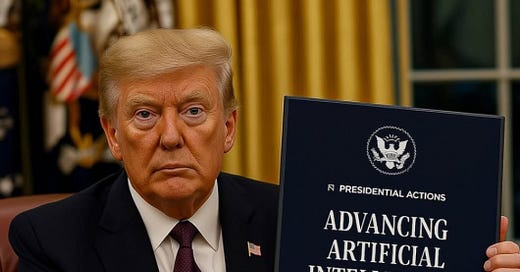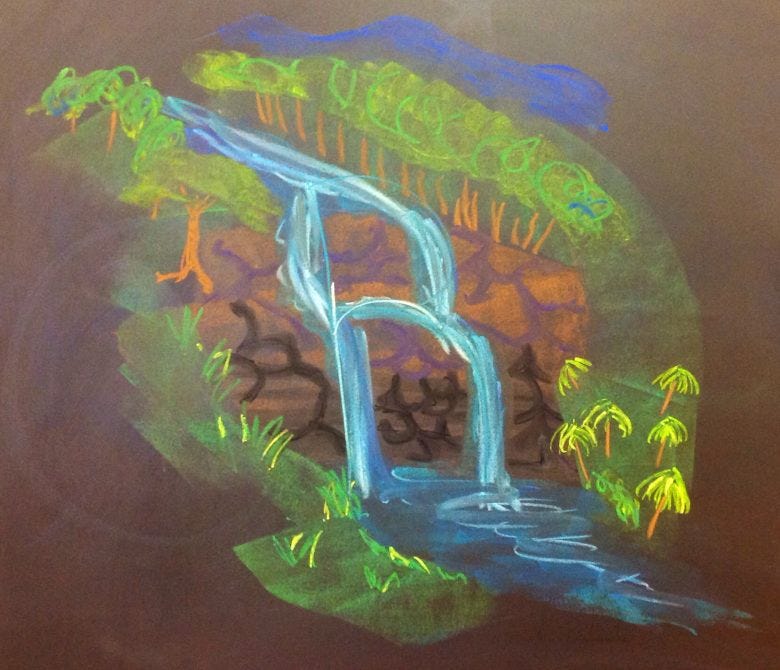In a bold and controversial move, a recent executive order signed by President Trump mandates the integration of Artificial Intelligence into public school curricula, starting in Kindergarten. On the surface, the initiative is framed as a leap into the future: a promise to make America’s children “AI-ready” before they even master cursive. The announcement has stirred excitement in some quarters, anxiety in others, and a deep, resonant pause for those of us rooted in Waldorf education.
Why the pause?
Because Waldorf education is not afraid to say: not yet.
At a time when national policy pushes formal academics, data-driven instruction, and technological fluency earlier and earlier into a child’s life, Waldorf education steps back—and listens.
The Child Is Not a Computer
Rudolf Steiner, the founder of Waldorf education, understood over a century ago what many neuroscientists confirm today: human development unfolds in stages. Children are not empty vessels to be filled with information, nor are they programmable machines to be made “future-proof.” They are living beings, unfolding through a sacred rhythm of becoming—physically, emotionally, and spiritually.
Waldorf educators view the early years not as a time to cultivate the intellect but as a crucial season for nourishing the will and imagination. That’s why you’ll find kindergartners in a Waldorf classroom baking bread, painting with watercolor, building forts in the woods, or listening to fairy tales, rather than learning to code or taking standardized assessments.
To the outside observer, this might look like avoidance. But it is, in truth, preparation.
Will Before Intellect
The Waldorf approach builds a foundation in the will—the capacity to act with intention, persistence, and purpose. Children learn through doing. Their bodies become literate before their minds. They learn rhythm, responsibility, and reverence for life through chores, stories, play, and seasonal rituals. These experiences do not delay learning; they prepare the soil for it.
When formal academics are introduced, typically around age 7, when the child's first teeth signal a deep physiological shift, it arrives not as an imposition, but as an invitation. The child is ready to meet the world of symbols and abstraction because their inner world has been richly seeded with beauty, order, and trust.
Imagination: The Forgotten Superpower
Waldorf education defends imagination not as fluff, but as fuel for the future intellect. Long before children analyze data or write essays, they are asked to picture—to envision kings and shepherds, to follow the flight of a bird, to feel the sorrow of a lonely gnome. Drawing from fairy tales and nature, these images create a soul-muscle memory. Later, when the child is asked to imagine mathematical concepts, historical movements, or metaphysical truths, they have a deep well to draw from.
Imagination is not the opposite of intelligence—it is its beginning.
A Stand for the Soul in the Age of AI
So, what does Waldorf say in response to the new federal push for AI education in Kindergarten?
It says: Children are not machines.
It says: The future needs more than efficiency. It needs humanity.
It says: Wisdom cannot be rushed.
While AI can replicate answers, it cannot cultivate wonder. While it may predict behavior, it cannot replace love. And while it may simulate creativity, it cannot dream from the soul.
Waldorf education trusts in the ancient rhythm of becoming. It knows that seeds planted too soon do not bear sweeter fruit—they simply fail to root. Waldorf honors the sacred art of timing by protecting the early years and delaying formal academics until the child is ready.
Because education is not a race to the future.
It is a remembering of what it means to be fully human.
In the world of Waldorf education, learning doesn’t begin with worksheets or phonics drills—it begins with wonder. And in the first grade, that wonder comes alive in the form of the Main Lesson, where the alphabet is not memorized, but discovered—letter by letter, sound by sound, through the living images of fairy tales.
Each consonant is introduced as a picture drawn from a story. The child doesn’t simply learn that "B" is for "bear"—they meet the bear lumbering through the forest in a tale by the Brothers Grimm. They see the mountain path wind into an “M,” the dragon curl into a “D,” or a sleeping princess dream herself into an “S.” These are not abstract marks to be decoded—they are archetypes, woven into the soul through story, rhythm, and art.
The teacher tells the tale aloud, often over several days, allowing it to sink in before revealing the letter hidden within. Then, through form drawing, watercolor painting, beeswax modeling, and writing, the children slowly bring the letter into being—not just on the page, but within themselves. The learning moves from head to heart to hand.
Why this approach? Waldorf education honors the developmental timing of the child. Around age seven, children are just beginning to awaken to the world of symbols and abstract thought. Fairy tales meet them where they are, bridging the imaginative soul-life of early childhood with the emerging capacity for literacy. The consonants carry form, structure, and substance—qualities the child instinctively feels through the weight and presence of these stories.
Perhaps most importantly, they love it. The stories are not just instructional—they are formational. They cultivate reverence, attentiveness, and deep inner pictures that nourish the will and imagination—foundations not only for reading but for life.
In Waldorf first grade, we don’t rush children into the world of intellect. We invite them in—through the golden doors of myth, meaning, and mystery—one letter at a time.
Dear Readers,
I’m thrilled to share the rhythm of my weekly publishing schedule with you. It reflects my lifelong devotion to education and my passion for storytelling that stirs the soul.
Wednesdays: Waldorf Education Substack
Every Wednesday morning, I’ll post to my Waldorf Education Substack—an ongoing exploration of why education matters more than ever in our modern world. Rooted in Rudolf Steiner's revolutionary vision, these posts will trace the arc of Waldorf pedagogy from its inception in 1919, when Steiner was invited to speak to the workers of the Waldorf-Astoria Cigarette Company in Stuttgart, Germany.
At the request of Emil Molt, the company’s owner, Steiner founded a school, not to mold children into cogs for a collapsing system, but to prepare whole human beings capable of healing and renewing the world. Each post will offer insight into this soul-nurturing form of education and how it continues to serve humanity in the age of machines and disconnection.
Sundays: Novels That Illuminate Substack
Each Sunday, I’ll shift focus to my Novels That Illuminate Substack. These posts will delve into the literary world I’ve been building—fiction that weaves together history, metaphysics, and the soul’s journey. Whether I’m sharing behind-the-scenes glimpses of my current projects, reflections on storytelling, or excerpts from my books, this space is where imagination becomes revelation.
By separating these two streams—education that inspires and fiction that awakens—I hope to offer you both nourishment and illumination.
Thank you for reading, and I look forward to walking these paths with you each week.












Intelligent lawyers, politicians, and business people have used AI and falsely assumed it was a shortcut to real thinking. In the process they embarrassed and degraded themselves because thought and emotion was removed from the process leaving them with profoundly flawed presentations. Trump is always looking for a fast and easy way to do things. If young children learn that fast and easy is preferred over a real learning experience we are doomed. You only learn when ideas and strategies are internalized by discovery - not simply created by a machine. But then fast, lazy, and sloppy are emblematic of the Trumpian Way.